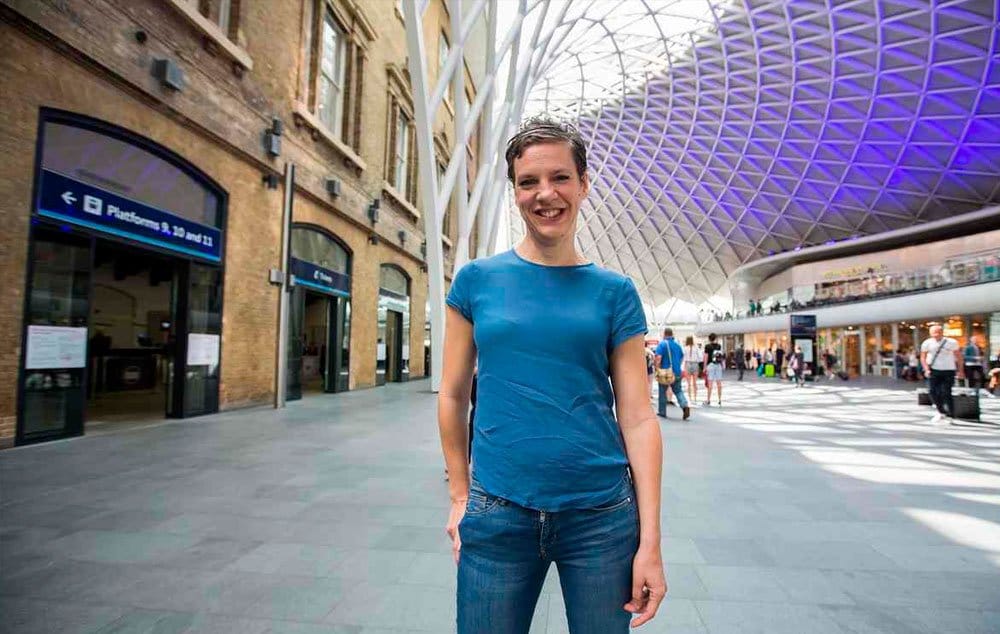Network Rail has pledged to make the railway accessible to all, and will consult disabled passengers before building new infrastructure after admitting to having made life “incredibly difficult” for some travellers in the past.
Research carried out by Populus on behalf of Network Rail found that while 67% of disabled people travel by train, around a quarter of those passengers expect to have difficulties on the journey and a third do not use the train as often as they otherwise would because of accessibility concerns. More than half of disabled people polled (58%) said they believed that accessibility on the rail network was improving.
Network Rail published the results of the poll as it launched its campaign to enhance the experiences of disabled people on the rail network.
Chief executive Mark Carne said the company will change its culture from one of “bolting-on” solutions as an afterthought to one of ensuring stations are designed so that every travellers’ needs are met.
The move has been met with some scepticism by disability charities after a Network Rail spending review earlier this year cut half of the £100m budget for Access for All from its five-year plan.
Comedian Francesca Martinez, who has cerebral palsy and describes herself as a “wobbly woman”, and is fronting the Spaces and Places for Everyone endeavour, said she was satisfied that it was not “some empty PR campaign”, adding: “This campaign came out of a real disabled person’s lived experience, and genuine desire to make the railways more accessible.”
That person is Margaret Hickish MBE, Network Rail’s access and inclusion manager, who is also a wheelchair user due to an accident at a train station. Hickish, who has previously worked on accessible design for projects including the London 2012 Olympics park and the Scottish parliament building, said: “The rail industry is behind the curve, no doubt about that. Now we want to do more than just meet the regulation.”
Hickish added: “Accessibility in the past has always been done as a retrofit; bolted on, functional and ugly. With inclusive design, it’s possible to make it beautiful and work for everyone.”
Martinez said: “What is crucial to this project is consulting with a whole range of people and abilities to make sure everyone is included, not just relying on one or two people to imagine what is needed. I’m wobbly but I have no idea what someone blind or deaf or short might need. The company can’t automatically know – this is about showing a real willingness to engage and to take people’s views and experiences on board.
“My needs are invisible and my environment is hardly ever built for me – many disabled people feel that.”
Changing platforms at stations and not knowing where the coach would be on the train were problematic for her, Martinez said, adding: “People dash, and I can’t dash – it’s very stressful and I feel very vulnerable. That fear or panic or desperate attempt to find a staff member, who are like, who’s this crazy wobbly woman?”
Carne admitted to having been shocked when he realised “how incredibly difficult we were making life” for a wheelchair user he met soon after joining Network Rail. Now, he said: “There are lots of parts of the network that are really very unfriendly to disabled people … but we are making great strides.”
But Transport for All said that while Network Rail’s initiative for better inclusive design was welcome, it was, meanwhile, in effect cutting funding for disabled access. Its director, Faryal Velmi, said: “We are dismayed by the proposals in the Hendy review of Network Rail to defer 50% of vital Access for All projects to 2019-24. The Access for All fund has delivered much needed ringfenced funding to make stations accessible and it’s scandalous that disabled people will be made to wait a further five years.”
However, a Network Rail spokesman said that, while schemes had been cut in chairman Sir Peter Hendy’s review of all rail projects: “All the scheduled improvement works will still go ahead, but some will be delivered slightly later than planned, purely because of affordability.”
He added: “Our Spaces and Places for Everyone campaign is all about inclusive design – something which should, over time, render schemes like Access for All redundant … we will carry out diversity impact assessments so that our environments become more inclusive before rail projects leave the drawing board rather than being bolted on as they have been in the past.”
Currently, two wheelchair users cannot travel in the same coach on most British trains. Hickish said she had been left stranded at stations even when staff had been on hand to assist her from a train – but did so without considering the impact of a broken lift on the platform. On another journey from London to Scotland, the conductor of a train whose disabled toilet had broken offered to compensate her with a free drink.
Hickish said new rolling stock being brought in on Thameslink trains will improve accessibility. But elsewhere on the franchise, unions fear that reforming the role of conductors on Southern could eventually mean fewer staff on trains, which could affect travellers with disabilities.
Martinez said: “Staff cutbacks really hit disabled people hard, there isn’t that person you can go to for extra help. When they took conductors off buses, I felt a lot more vulnerable, there isn’t someone there for you.”
James MacColl from the Campaign for Better Transport said: “Any new initiative to improve disabled passengers’ experiences of travelling by rail is very welcome. It is vital that all existing stations are upgraded to make the journey as safe, comfortable and easy as possible with more lifts to platforms, step-free access and more staff on hand to help.”
Velmi said that there were many other factors stopping real equality for all, particularly train companies insisting disabled passengers should book travel 24 hours in advance to get assistance.
Source: The Guardian



